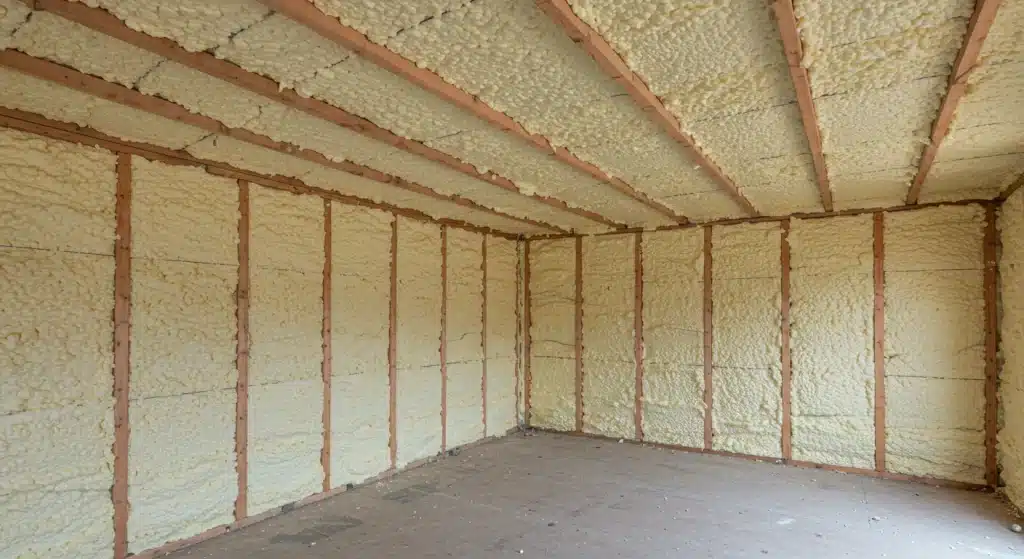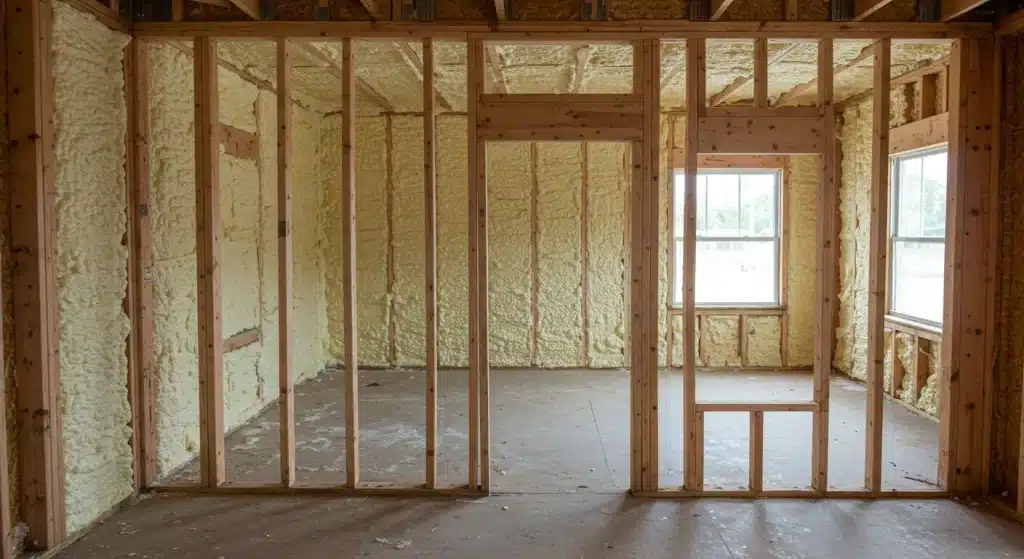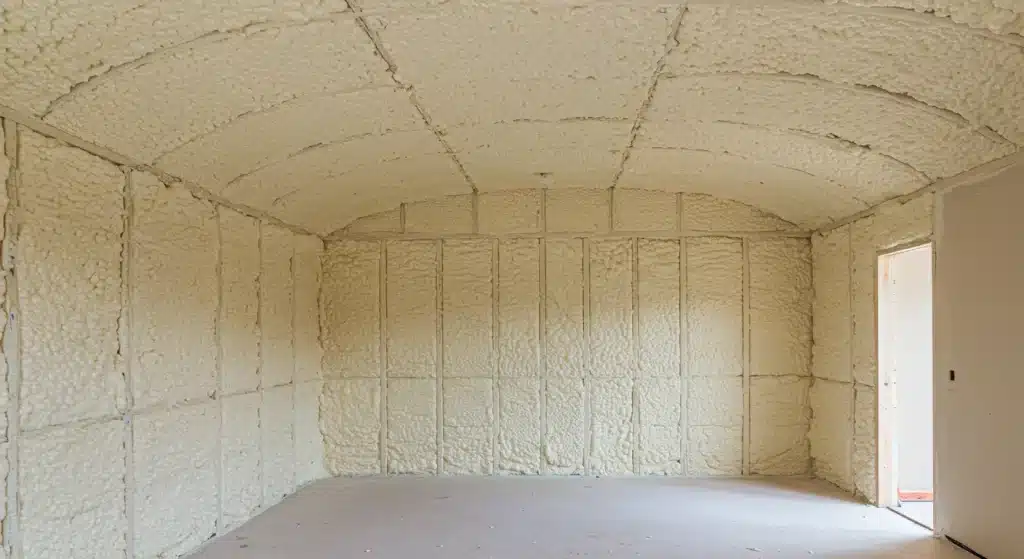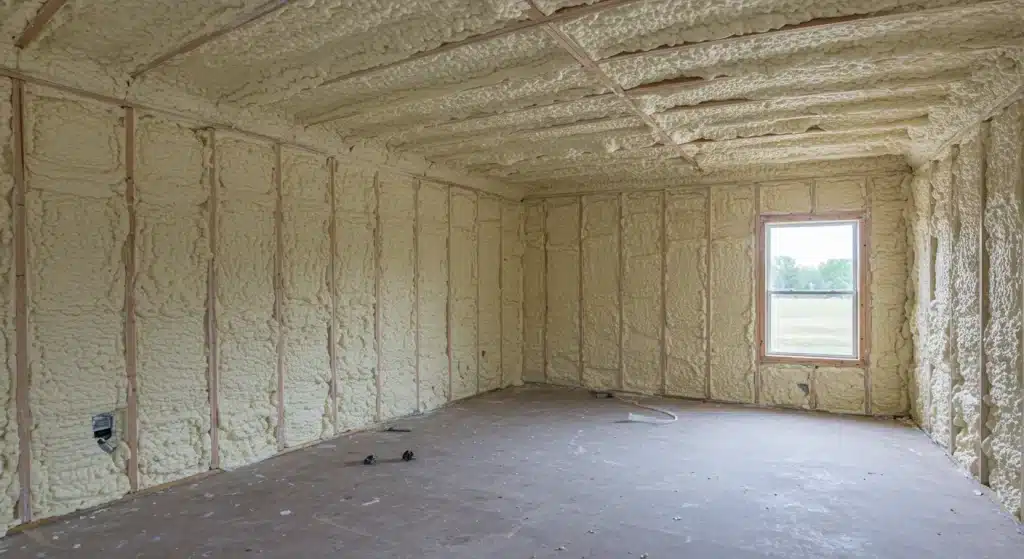Proper insulation offers significant environmental benefits, primarily by reducing a building’s energy consumption. When a home or office is well-insulated, it requires less energy to heat and cool, which directly lowers the demand on power plants. This reduction in energy generation leads to a substantial decrease in greenhouse gas emissions, particularly carbon dioxide (CO2), a primary contributor to climate change. Essentially, better insulation helps conserve natural resources and lessens a building’s overall carbon footprint.
This article explores the direct and indirect environmental advantages of upgrading a property’s insulation. The information here, based on extensive field experience and industry data, provides a clear picture of how this single improvement can create a positive ripple effect. Professionals in the field have seen firsthand how properly insulated buildings not only save money but also contribute to a healthier planet.
Lower Energy Use Means Fewer Emissions
The most immediate environmental benefit of effective insulation is the sharp drop in energy needed for heating and cooling. Most of this energy is produced by burning fossil fuels like natural gas and coal, which releases CO2 and other pollutants into the atmosphere. By creating a thermal barrier, insulation keeps indoor temperatures stable, meaning your HVAC system doesn’t have to work as hard or as often.
A report from the U.S. Department of Energy highlights that heating and cooling account for 50% to 70% of the energy used in the average American home. Sealing air leaks and adding insulation can help a homeowner save an average of 15% on heating and cooling costs. This direct reduction in energy use translates into a proportional decrease in emissions from power plants. According to the U.S. Environmental Protection Agency, electricity production is a major source of greenhouse gas emissions in the United States. Anything that lowers electricity demand, like proper insulation, helps reduce this impact.
Bonus Tip: Combining insulation upgrades with air sealing is the most effective strategy. Even high-quality insulation can be undermined by drafts and air leaks around windows, doors, and fixtures. Sealing these gaps first ensures the insulation performs at its peak capacity.
Conservation of Natural Resources
A lower demand for energy also means a lower demand for the finite fossil fuels used to generate it. By insulating buildings effectively, we collectively reduce the need for coal mining, oil drilling, and natural gas extraction. These industrial activities often have their own set of negative environmental consequences, including habitat destruction, water contamination, and air pollution.
By improving energy efficiency at the building level, we can slow the depletion of these non-renewable resources. This approach promotes a more sustainable model of energy use, where conservation is just as important as production. Over time, widespread adoption of better insulation standards can lessen the pressure to develop new fossil fuel extraction sites, preserving natural landscapes for future generations.
Comparing Common Insulation Materials
Not all insulation materials are created equal when it comes to their environmental profile. Factors like production energy, recycled content, and lifespan all contribute to their overall impact.
| Insulation Type | Typical R-Value (per inch) | Made with Recycled Content? | Lifespan | Air Sealing Capability |
|---|---|---|---|---|
| Fiberglass Batts | 3.1 – 4.3 | Yes (Varies by mfg.) | 15-20 years (can settle) | Low (prone to gaps) |
| Blown-In Cellulose | 3.2 – 3.8 | Yes (Often >80%) | 20-30 years (can settle) | Moderate (fills cavities well) |
| Open-Cell Spray Foam | 3.5 – 3.8 | No | Lifetime of building | High (expands to seal gaps) |
| Closed-Cell Spray Foam | 6.0 – 7.0 | No | Lifetime of building | Excellent (forms a rigid barrier) |
As the table shows, different materials offer unique benefits. While options like closed-cell spray foam provide superior R-value and air sealing, the best choice depends on project goals and budget. The long-term performance and durability of higher-performing materials can often result in greater net energy savings over several decades.
Things to Consider Before Upgrading Insulation
Making the right choice involves more than just picking a material. Several factors should guide your decision to ensure you get the best environmental and financial return on your investment.
Complete an Energy Audit
Before buying any materials, get a professional energy audit. This assessment uses tools like blower doors and infrared cameras to pinpoint exactly where your home is losing the most energy. An audit prevents you from spending money on areas that don’t need it and helps prioritize the most impactful upgrades, whether it’s the attic, crawl space, or walls.
Understand Your Climate Zone
The necessary R-value, or thermal resistance, of insulation depends heavily on your local climate. A home in a cold region like Minnesota requires a much higher R-value than a home in a warm area like Fresno. The Department of Energy provides R-value recommendations based on climate zones, ensuring you don’t over-insulate or under-insulate for your specific environment.
Bonus Tip: In hot climates, insulation is just as important for keeping heat out as it is for keeping heat in during colder months. A well-insulated attic can significantly reduce cooling costs by blocking radiant heat from the sun.
Material Production and Lifespan
Consider the entire lifecycle of the insulation material. Some products, like cellulose, are made from a high percentage of recycled paper, which is a great environmental feature. Others, like spray foam, require more energy to produce but offer an indefinite lifespan and superior performance that prevents the need for future replacements and reduces long-term energy use. Weigh the upfront environmental cost of production against the long-term benefits of durability and energy savings.

Frequently Asked Questions About Insulation’s Green Impact
Is the manufacturing of insulation bad for the environment?
The environmental impact of manufacturing varies by material. Some processes are energy-intensive, while others utilize recycled materials. The key is to look at the net effect. The energy saved over the insulation’s lifespan almost always far exceeds the energy used to produce it. This “energy payback” period is often just a few years.
Does old insulation have to be removed?
Not always. If the existing insulation is dry and free of mold or pests, new insulation can often be installed on top of it, especially in attics. However, if the old material is wet, compressed, or contaminated, it must be removed to ensure the new insulation performs correctly and to prevent health issues.
What is R-value and why does it matter for the environment?
R-value measures an insulation material’s ability to resist heat flow. The higher the R-value, the better its insulating performance. A higher R-value directly translates to lower energy consumption for heating and cooling, which in turn reduces the carbon emissions associated with your home’s energy use.
Can better insulation really help combat climate change?
Yes, on a collective scale. Buildings are a major source of global greenhouse gas emissions. According to a report by Architecture 2030, the building sector is responsible for a significant portion of global energy consumption and CO2 emissions. Improving the thermal performance of millions of homes and commercial buildings can lead to a massive reduction in energy demand, making a real difference in the fight against climate change.
Are there eco-friendly insulation materials available?
Absolutely. Materials like cellulose (made from recycled newspaper), denim (from recycled cotton), and cork are considered highly sustainable. While these options are great, it’s also important to consider performance and longevity. Sometimes, a material with a higher initial production impact, like spray foam, can be the greener choice over the long term due to its superior energy-saving performance and durability.
Does insulation help with noise pollution too?
Yes, many types of insulation provide excellent sound-dampening qualities. Denser materials like closed-cell spray foam and cellulose are particularly effective at blocking airborne sound. This creates a quieter, more peaceful indoor environment, which is a significant quality-of-life benefit alongside the environmental and financial advantages.
A Greener Structure Starts with Better Insulation
Choosing to upgrade your insulation is one of the most effective decisions you can make for the environment. It directly lowers your property’s energy consumption, which reduces greenhouse gas emissions and conserves natural resources. Beyond the global impact, it also creates a healthier, more comfortable, and quieter indoor space. Before moving forward, take the time to evaluate your home’s specific needs, consider your climate, and research the best materials for your long-term goals.
Get a Professional Insulation Assessment
Every building has unique challenges and opportunities for energy savings. A professional evaluation can help identify the most effective solutions for your property. For a detailed consultation to understand your insulation needs, you can contact Supreme Spray Foam Fresno for expert advice. Reach out by calling (559) 545-0800 or sending an email to [email protected] to discuss how to make your property more energy-efficient.
Sources
- U.S. Department of Energy – Provides comprehensive information on insulation types, R-values, and potential energy savings for homeowners.
- U.S. Environmental Protection Agency – Offers detailed data on the sources of greenhouse gas emissions in the United States, highlighting the impact of electricity generation.
- Architecture 2030 – An organization that provides research and statistics on the building sector’s impact on energy consumption and climate change.





